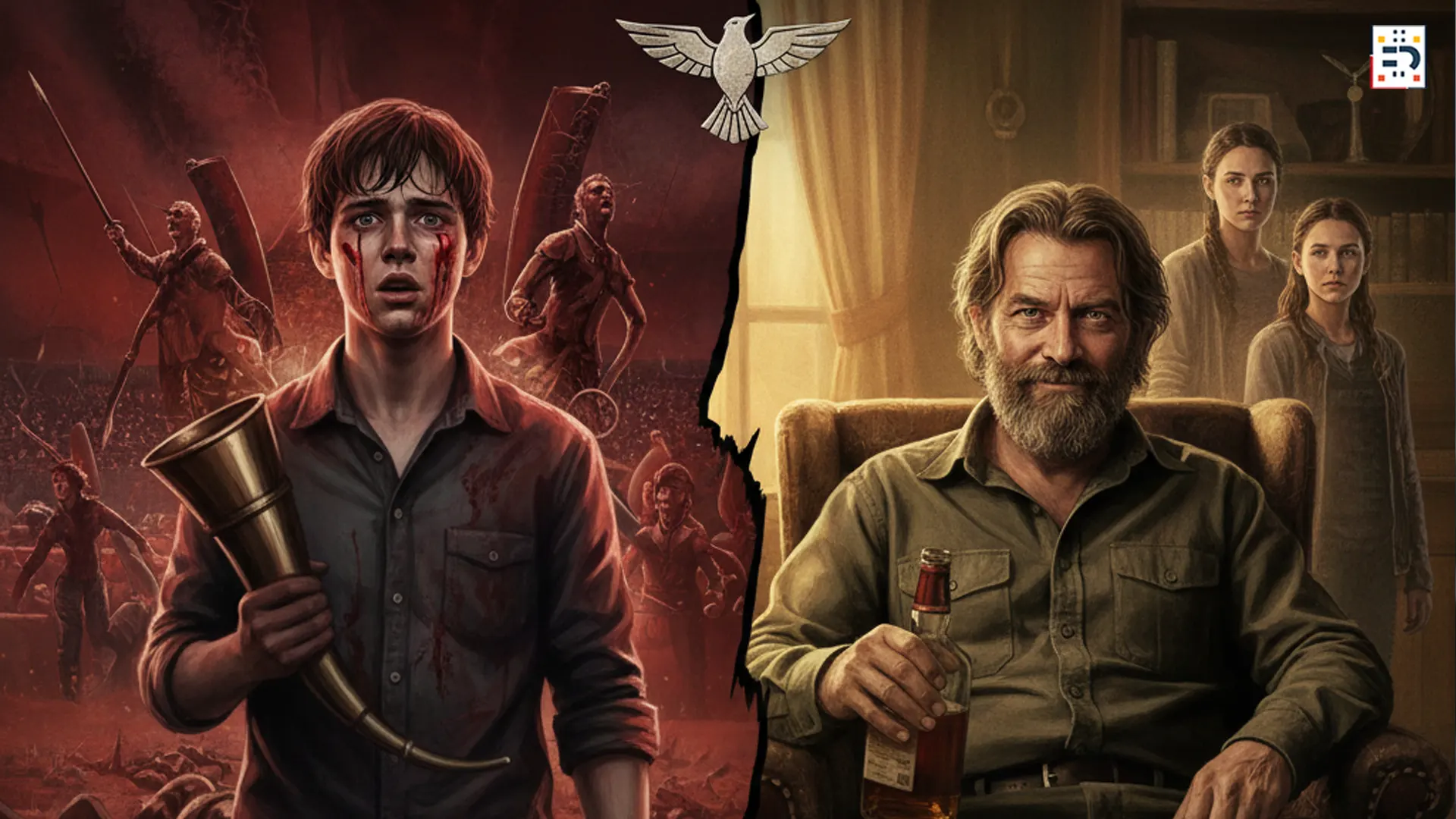Introduction: Why Haymitch’s Story Resonates in the U.S.
The Making of the Mentor: How the 50th Games Broke Haymitch and Forged the Man We Know highlights a compelling character arc filled with trauma, grit, and political tension. These themes strongly resonate with U.S. readers, who often explore topics like government overreach, social inequality, mental health struggles, and resilience in adversity through media, literature, and real-world discourse.
Haymitch’s life story mirrors issues familiar in American society: the cycle of poverty, the fight against oppressive systems, and the journey from hardship to reluctant leadership.
Haymitch Abernathy’s Childhood in District 12
Growing up in District 12 meant constantly battling hunger, scarcity, and danger. Haymitch’s early life built the survival instincts and emotional walls he needed to compete in the Hunger Games.
Living in Poverty and Hardship
Haymitch grew up in a coal-mining district where:
- Food was scarce
- Medical care was minimal
- Jobs were dangerous
- Children grew up far too fast
These hardships created a boy who had no choice but to observe, adapt, and survive.

Real-World Parallels to U.S. Poverty Trends
His upbringing reflects the kind of economic struggle seen in parts of the United States. Statistics from the U.S. Census Bureau’s poverty data show that millions of Americans face similar conditions: job insecurity, food shortages, and systemic inequality.
Panem’s Political Environment Before the 50th Hunger Games
The Capitol maintained control through fear, surveillance, and manipulation. In the years leading up to Haymitch’s Games, tension between districts and the Capitol intensified.
Capitol Power Structures
The Capitol used:
- Propaganda
- Public punishment
- Controlled resources
- Military force
These tactics mirror modern discussions in the United States about political power, inequality, and justice reform.
The Unique Nature of the Second Quarter Quell
The 50th Games forced each district to send double the tributes. This was a calculated show of power intended to crush hope and remind the districts of the Capitol’s dominance.
The Reaping: The Day Haymitch’s Fate Was Sealed
When Haymitch was reaped, most of District 12 assumed he wouldn’t survive more than a few days. Yet his quiet confidence during the Reaping suggested something deeper—a sharp instinct honed by years of hardship.
Emotional Fallout in District 12
For a district crushed by despair, losing another teenager was devastating. But Haymitch’s determination unexpectedly sparked unity and a sense of pride.
Training for the Arena: How Haymitch Prepared
In training, Haymitch quickly proved he wasn’t physically the strongest—but he was unquestionably one of the smartest.
Physical Strength vs. Strategic Intelligence
Haymitch relied on:
- Agility
- Quick thinking
- Observation
- Resourcefulness
These traits helped him outperform physically superior tributes.
Media Psychology and Capitol Influence
The Hunger Games were as much a psychological war as a physical one. Haymitch adapted to the Capitol’s expectations, using charisma and performance strategy. His behavior aligns with concepts explained in APA’s media psychology research, which studies how people respond to public image pressures.

Inside the Arena: The 50th Hunger Games Explained
The arena was a deceptive paradise—lush, beautiful, and lethal.
Environmental Hazards and Design
The Capitol engineered hazards like:
- Poisonous plants
- Deadly weather shifts
- Mutated animals
- Camouflaged traps
Haymitch survived by understanding the landscape better than anyone else.
Alliances and Betrayals
He formed temporary alliances based on strategy rather than trust. These short-lived partnerships taught him valuable lessons about survival, loyalty, and deceit—lessons he would later pass to Katniss and Peeta.
The Force Field Strategy That Changed Everything
The defining moment of Haymitch’s Games came when he discovered the arena’s invisible force field.
By tricking his final opponent into attacking near it, he caused the blow to rebound and kill her instantly. This was one of the most brilliant moves in Hunger Games history.
Capitol Humiliation and Its Consequences
Haymitch didn’t just win—he exposed a flaw in the Capitol’s design. The Capitol viewed this as an unforgivable insult.
Capitol’s Punishment: The Trauma That Followed
Instead of rewarding him, the Capitol murdered everyone Haymitch loved. Their message was clear: no one defies the Capitol without paying a price.
PTSD, Survivor’s Guilt, and Mental Health
Haymitch’s alcoholism and emotional withdrawal were not poor choices—they were symptoms of deep trauma. The National Institute of Mental Health’s PTSD resources describe how extreme trauma can reshape a person’s life, just as it did Haymitch’s.
Becoming a Mentor: Haymitch Steps Into Leadership
Forced into the role of mentor, Haymitch struggled with grief but grew into a brilliant strategist.
American Leadership Parallels
His leadership reflects U.S.-valued traits like:
- Resilience
- Grit
- Honesty
- Sacrifice
Haymitch became the reluctant leader District 12 desperately needed.

His Mentorship of Katniss and Peeta
He trained them using:
- Brutal honesty
- Strategic insight
- Emotional detachment
- Tough love
In them, he saw reflections of his younger self—and a chance for redemption.
Haymitch’s Quiet Role in the Rebellion
Haymitch helped unite districts, support District 13, and protect Katniss. His brilliance shaped the Mockingjay story more than most realize.
Strategy, Influence, and the Mockingjay Movement
He coordinated rescue missions, devised political tactics, and made decisions few others could. His trauma gave him clarity—and a unique ability to predict Capitol behavior.
Why the 50th Games Forged the Mentor We Know
The 50th Games didn’t just break Haymitch. They forged him into a leader capable of guiding two young tributes to victory—and ultimately shaping a revolution.
The Making of the Mentor: How the 50th Games Broke Haymitch and Forged the Man We Know shows how one man’s suffering can become a catalyst for change.
FAQs
1. Why were the 50th Hunger Games so deadly?
Because the Capitol required double the tributes in the Quarter Quell.
2. Why did the Capitol kill Haymitch’s family?
To punish him for exposing a flaw in their arena and embarrassing their regime.
3. Did Haymitch volunteer?
No—he was reaped.
4. Why did Haymitch become an alcoholic?
He suffered from severe trauma and survivor’s guilt after the Capitol killed everyone he cared about.
5. How did Haymitch influence the rebellion?
He quietly shaped strategy, protected Katniss, and built alliances that fueled the uprising.

6. Is Haymitch one of the smartest victors?
Absolutely. His analysis of the force field remains one of the most iconic strategic moves in Games history
Haymitch Abernathy’s story is a powerful blend of trauma, resilience, and rebellion. The Making of the Mentor: How the 50th Games Broke Haymitch and Forged the Man We Know shows how a broken boy became one of Panem’s most influential figures—shaping both Katniss Everdeen and the fate of the rebellion.
#HaymitchAbernathy #HungerGames #HaymitchMentorArc #QuarterQuell #Panem #DystopianFiction #CharacterAnalysis #Mockingjay #HungerGamesFans #50thGames #TraumaRecovery #StoryAnalysis


